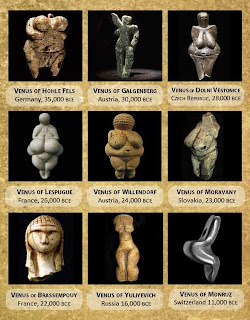The Divine Feminine has been a revered concept throughout history, predating patriarchal religions. This article aims to delve into the different forms of Mother Goddess, as represented in ancient cultures, providing an understanding of the significance of the divine feminine in historical societies.
The Divine Feminine: Overview
From the depth of history, the divine feminine was considered sacred and was venerated as the matrix of creation. In many ancient societies, the nurturing nature of the divine feminine was associated with concepts of fertility and creation, taking the form of the Great Mother Goddess. The religion of the Goddess existed in many parts of the ancient world, long before patriarchal religions took precedence. Societies were structured and managed around these Goddess religions and were governed by a collective of priestesses dedicated to the rituals. Women held significant roles and served as priestesses and perhaps religious leaders. For the most part, these societies were matriarchal and developed peaceful cultures, without fortifications until the emergence of warrior societies.
The First Divine Feminine: Gaia in Ancient Greek Mythology
Often known as Mother Earth, the Mother Goddess is a matriarchal archetype frequently represented in ancient art and present in various mythologies worldwide. Today, most of the world's major religions: Islam, Christianity, and Judaism, have a male God, and the only evidence of a completely different world celebrating the sacred feminine comes from ancient artifacts from the distant past. For our ancestors, the incarnation of the divine feminine was the Earth itself. The ancients, who had a more direct and greater relationship with nature, saw the earth as this gigantic female being that continuously gives birth and creates life. They observed and were witnesses to plants and animals being born on the earth's surface, multiplying, and finally returning to it, only to return again through regeneration. A cycle that remains constant: birth, death, and rebirth.
The Divine Feminine in Ancient Art: The Venus of Willendorf
The Mother Goddess, often known as Mother Earth, is a matriarchal archetype frequently represented in ancient art and found in various mythologies worldwide. Today, most of the world's major religions: Islam, Christianity, and Judaism, have a male God, and the only evidence of a completely different world celebrating the sacred feminine comes from ancient artifacts from the distant past. For our ancestors, the incarnation of the divine feminine was the Earth itself. The ancients, who had more direct contact and a more significant relationship with nature, saw the earth as this gigantic female being that continuously gives birth and creates life. They observed and were witnesses to plants and animals being born on the earth's surface, multiplying, and finally returning to it, only to return again through regeneration. A cycle that remains constant: birth, death, and rebirth.
The Sleeping Lady of Malta
The Sleeping Lady is a small clay statuette found in the Hal Saflieni hypogeum, a Neolithic cemetery in Malta. It portrays a voluptuous figure lying on her side in a sleeping position on a bed. Since the statuette was discovered in a burial place, scholars speculate that it might represent death or eternal sleep.
Feminine Figurines of the Cyclades and the Cycladic Islands
Completely different from the previous voluptuous women are the famous feminine figurines of the ancient Cycladic art, which have inspired many contemporary artists. Focusing on their religious dimension, we also interpret them as symbols of the divine feminine.
The Serpent Goddess from Ancient Crete
In the art and culture of ancient Egypt, we also encounter the worship of a series of female deities associated with values, morality, and order, as well as female fertility, menstruation, conception, and the provision of breast milk.
The Raised Arm Goddess: The Divine Feminine in Ancient Cyprus
This clay statuette of a goddess with raised arms was found in Cyprus. These figurines were found in various temples around the island dedicated to the local goddess's worship.
Conclusion
The divine feminine in its many forms has been an integral part of human history. Recognizing and understanding these ancient forms of female deities helps us better understand the societies that venerated them and the values they upheld. Today, as we continue to strive for gender equality and respect for all, revisiting these ancient forms of the Great Mother Goddess provides us with a unique perspective on the importance of balance and the respect for all life forms.


BEaUtiful article about roots of ancient Goddesses!Thank you.
ReplyDeleteMarjan Bloem NL.
Post a Comment